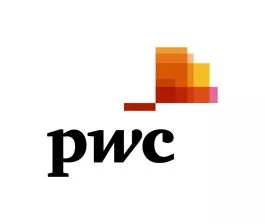The Canada Customs and Revenue Agency (CCRA) now requires that all Canadian corporations file the new General Index of Financial Information (GIFI) with their federal income tax returns, starting with taxation years ending in 2000. The GIFI is intended to replace the financial statements that were traditionally filed with the returns.
The GIFI is a list of about seven hundred pre-defined financial statement items. Each is assigned a unique code. GIFI schedules are available in all tax software packages approved by CCRA.
The CCRA’s View Of The GIFI
The CCRA introduced the GIFI as a method of collecting financial information in a codified format to facilitate processing, validation and audit selection. The CCRA claims that the new codified format will increase efficiency by allowing it to process returns and answer questions faster, and will provide Statistics Canada with an improved collection process. It is also a step forward towards electronic filing of federal corporate returns.
Are All Corporations Required To File?
All corporations (including non-resident corporations) are required to file their tax returns using the GIFI, except for insurance companies involved in underwriting and non-profit organizations.
GIFI-Short is a shorter paper version of the GIFI, with approximately 100 pre-defined codes. The GIFI-Short is available at local CCRA tax services offices, for corporations:
- that do not use tax preparation software; and
- have both gross revenues and assets of less than $3 million.
Information Reported
Generally, the level of detail to be reported in the GIFI is the same as that reported in the traditional financial statements. For each item reported on the financial statements, the best description on the GIFI should be selected and the appropriate balance entered. Corporations are allowed to choose the level of detail they wish to report to the CCRA, as was the case with traditional financial statements.
As a minimum, the following seven items must be reported in the GIFI to verify accounting equations:
- total assets;
- total liabilities;
- total shareholders’ equity;
- total revenues;
- total expenses;
- net income; and
- retained earnings.
In addition to reporting the financial figures, corporations must also complete a short checklist that indicates who prepared the financial statements and the extent of their involvement. This checklist also identifies the type of information contained in the notes to the financial statements.
Any notes to the financial statements must be included with the GIFI. As indicated above, financial statements are not required to be submitted with the GIFI and the returns. However, many accountants feel strongly that the notes to the financial statements are an integral part thereof and should not be separated from the statements. Thus, it likely will be common practice for corporations to continue to file financial statements with notes as well as completing the GIFI.
Selecting GIFI Items
The GIFI is divided into blocks of items. The item at the start of each block is the generic term for items within the block and is not the total of all the items in the block. In selecting a GIFI item, an attempt should be made to find the exact match to the financial statement item. If there is no exact match, the most appropriate item should be selected. If no appropriate item can be selected, the generic item should be used.
For example, Loans and Notes Receivable is the generic item followed by more specific items coded as Demand Loans Receivable, Other Loans Receivable, Notes Receivable and Mortgages Receivable.
If an amount on the financial statements consists of more than one GIFI item, the corporation should select the GIFI item that describes the greatest amount in the financial statements. For example, if Accounts Receivable is an item on the financial statements that is made up of Trade Receivables of $50,000 and Interest Receivable of $12,000 for a total of $62,000, the corporation should select Trade Receivables in the GIFI and report the entire amount of $62,000.
Other Specific Items
Partnerships and joint ventures: Financial statements of partnerships and joint ventures that are required to be submitted with the corporate partner's tax returns should continue to be submitted as paper copies. The GIFI should not be used to report the financial information of the partnership or joint venture.
Segmented information: Corporations that wish to report income from multiple lines of business can do so in the GIFI. A different sequence number is assigned to each line of business. Sequence number 1 should be the main line of business.
New corporations: Newly formed corporations will be required to complete an opening and closing balance sheet. Approved software packages have been set up to report opening and closing balance sheets on GIFI schedules 101 and 100 respectively.
Deferred exploration and development expenditures: The CCRA has specifically noted that corporations that have not yet generated significant sales revenues, and have capitalized deferred expenditures, should not use the GIFI to itemize these expenditures. Instead, they should include the total capitalized amount as one item on the balance sheet in the GIFI.
* * * * * * * * * * * * * * * *
The information provided herein is for general guidance on matters of interest only. The application and impact of laws, regulations and administrative practices can vary widely, based on the specific facts involved. In addition, laws, regulations and administrative practices are continually being revised. Accordingly, this information is not intended to constitute legal, accounting, tax, investment or other professional advice or service.
While every effort has been made to ensure the information provided herein is accurate and timely, no decision should be made or action taken on the basis of this information without first consulting a PricewaterhouseCoopers LLP professional. Should you have any questions concerning the information provided herein or require specific advice, please contact your PricewaterhouseCoopers LLP advisor.

